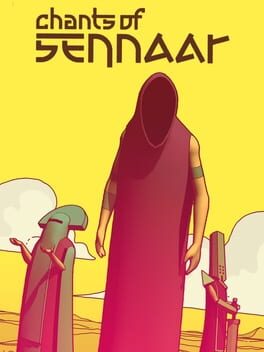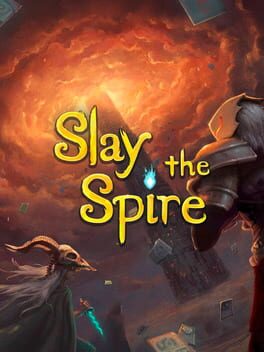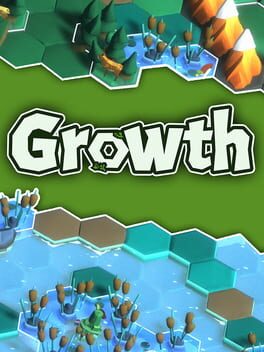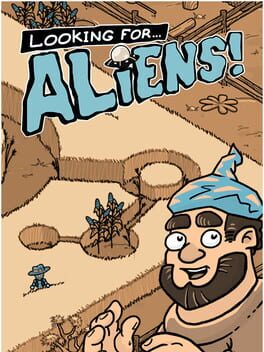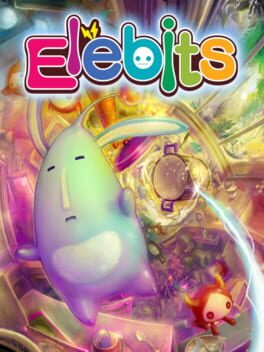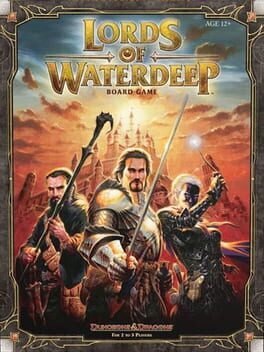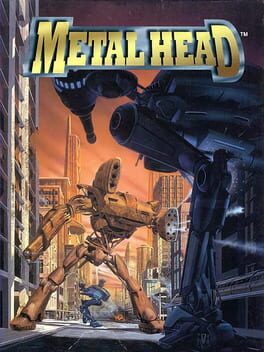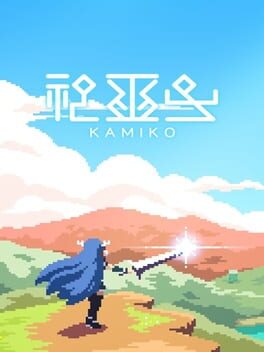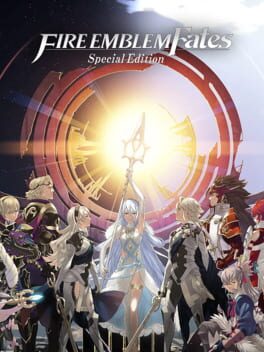OneBadMouse
91 Reviews liked by OneBadMouse
Chants of Sennaar
2023
I'm a linguist by trade. This game is more cryptography than linguistics. It's still occasionally satisfying as a puzzle game, and I commend those who designed the visuals and soundtrack, but the languages feel far too limited. Some solutions can feel very arbitrary, and the game is in dire need of a map.
3/5, because it's a very strong concept and there's a clear sense of care from the devs, but the longer the game went on, the more annoying navigation got, and the less believable everything was.
3/5, because it's a very strong concept and there's a clear sense of care from the devs, but the longer the game went on, the more annoying navigation got, and the less believable everything was.
Chants of Sennaar
2023
Chants of Sennaar
2023
Chants of Sennaar
2023
A fresh and unique puzzle game where the main puzzle mechanic involves deciphering different languages.
I'm always looking for puzzle games, despite not always being the best at them. Sennnaar is full of those "Ah ha!" moments that genuinely felt like I was figuring shit out on my own. It's good stuff.
It's very evocative of games I've played before. Aesthetically, the artstyle is quite striking and reminds me of Journey (even the OST has hints of this - not a bad thing!). A friend of mine also mentioned Obra Dinn as a similar game and I agree. I feels like a simpler, more linear take on that "figure this shit out on your own" puzzle design philosophy.
At it's best, Chants of Sennaar made me feel like the smartest man alive. Near the end though, I had to resort to a guide more times than I'd like to admit due to a late game difficulty spike. I understand what they were going for with the way the endgame is approached, but some of it just felt bad to figure out. I'll also mention that I dig what the narrative stuff is going for. The hook is interesting throughout and felt like a compelling enough carrot on a stick to keep me interested.
I also think that not all the areas are created equally. The second area in particular is one I didn't quite vibe with. Actually, in general, one of my main issues with the game is the size of the levels. Seriously, so many of the areas require back and forth between the various segments yet the running speed isn't fast enough to make this feel convenient or interesting. Had the areas been constructed in a more compact way, I think the game would have really benefitted from it.
Overall, I still really enjoyed my time with Chants of Sennaar. Late game difficulty spikes and slow travel time are really what bring it down a bit for me. It's still an easy puzzle game to recommend to anyone adventurous enough to try new things.
I'm always looking for puzzle games, despite not always being the best at them. Sennnaar is full of those "Ah ha!" moments that genuinely felt like I was figuring shit out on my own. It's good stuff.
It's very evocative of games I've played before. Aesthetically, the artstyle is quite striking and reminds me of Journey (even the OST has hints of this - not a bad thing!). A friend of mine also mentioned Obra Dinn as a similar game and I agree. I feels like a simpler, more linear take on that "figure this shit out on your own" puzzle design philosophy.
At it's best, Chants of Sennaar made me feel like the smartest man alive. Near the end though, I had to resort to a guide more times than I'd like to admit due to a late game difficulty spike. I understand what they were going for with the way the endgame is approached, but some of it just felt bad to figure out. I'll also mention that I dig what the narrative stuff is going for. The hook is interesting throughout and felt like a compelling enough carrot on a stick to keep me interested.
I also think that not all the areas are created equally. The second area in particular is one I didn't quite vibe with. Actually, in general, one of my main issues with the game is the size of the levels. Seriously, so many of the areas require back and forth between the various segments yet the running speed isn't fast enough to make this feel convenient or interesting. Had the areas been constructed in a more compact way, I think the game would have really benefitted from it.
Overall, I still really enjoyed my time with Chants of Sennaar. Late game difficulty spikes and slow travel time are really what bring it down a bit for me. It's still an easy puzzle game to recommend to anyone adventurous enough to try new things.
Chants of Sennaar
2023
Context is everything.
Without its layer of fictitious languages, Chants of Sennaar would just be another traditional point-and-click adventure game: talk to NPCs, collect and utilize items to solve inventory puzzles, and explore varied landscapes to discover secrets. Yet, that added layer is all Chants of Sennaar needs to stand out, because it fundamentally understands that the act of learning is in itself a puzzle. None of the classic adventure game puzzles are actually that difficult, but conjoined with the underlying problem of deciphering the presented languages at the same time, worldly interactions feel much more engaging and cohesive in the grand scope as learning opportunities, constantly giving you chances to piece together bits of understanding throughout the journey as part of its world-building. It's a fairly simple framework that allows the developers to easily throw new curveballs by simply altering the context to adapt to new surroundings; the underlying objective (learning a new language) never changes, but how other characters/objects interact with the environment around them will differ, so the path to achieve mastery of a new language never feels exactly the same.
It's easy to fault Chants of Sennaar for its limitations. For example, there's only about thirty characters used in each language, and they're all conveniently referring to the same nouns and verbs. However, I'm more than willing to overlook these contrivances, because none of them actually detracted from the game's constructed reality: after all, the game always felt more about the process of learning new languages than the robustness of the languages themselves. Even so, I find that it strikes a healthy medium because of the nuances here and there: for instance, you might find that glyphs often visually resemble the ideas that they represent, or that there are also visual similarities between nouns versus verbs. Still, languages also have enough surface differences to avoid complete analogues (such as how each language implements plural values), even altering structure at times so translation between languages isn't free. You'd think that this would lead to some degree of ambiguity interfering with the game's structure, especially since there's already a processing layer between the player and the game regarding the exact meaning of words (ex: what if you submitted a glyph as "potions" but the game insisted on the term "medicine?"). However, the game assuages this concern by having the player submit glyphs as definitions for sketched ideas (or direct analogous nouns/verbs for some glyphs), so even if players have slightly different interpretations, they'll most likely end up arriving at the same conclusion anyways. As such, the game utilizes sound compromises that lessen overall frustration but still retain the spirit of deciphering and implementing knowledge of foreign languages.
While these contrivances didn't impact my overall enjoyment, there were some external gameplay mechanics such as the forced stealth sections that generally contributed nothing to the premise and interfered with the game's pacing. I can somewhat justify a select few for making sense in-universe (i.e. eavesdropping on others' conversation while they're working to figure out what actions/objects they're referring to), but the vast majority of these forced stealth sections involved no interaction with the fictitious languages and seemed shoehorned-in to just pad out the runtime. It also doesn't help that they're not evenly spaced apart (most of the forced stealth takes place in the 2nd world and during the endgame if you're going for the true ending) and that these sections + a few chase sequences will force the player to restart if caught, with fail-states a rare occurrence throughout the rest of the game. Still, these mostly superfluous elements are but a mere blemish upon the final product, and though the ending feels slightly rushed, the silver lining is that Chants of Sennaar certainly does not wear out its welcome. It's one of the best takes upon the detective/investigation genre with no murder or theft required, and the highest praise I can give this surprise hit is that it made me even more excited for video games in a year already stacked with memorable releases.
Without its layer of fictitious languages, Chants of Sennaar would just be another traditional point-and-click adventure game: talk to NPCs, collect and utilize items to solve inventory puzzles, and explore varied landscapes to discover secrets. Yet, that added layer is all Chants of Sennaar needs to stand out, because it fundamentally understands that the act of learning is in itself a puzzle. None of the classic adventure game puzzles are actually that difficult, but conjoined with the underlying problem of deciphering the presented languages at the same time, worldly interactions feel much more engaging and cohesive in the grand scope as learning opportunities, constantly giving you chances to piece together bits of understanding throughout the journey as part of its world-building. It's a fairly simple framework that allows the developers to easily throw new curveballs by simply altering the context to adapt to new surroundings; the underlying objective (learning a new language) never changes, but how other characters/objects interact with the environment around them will differ, so the path to achieve mastery of a new language never feels exactly the same.
It's easy to fault Chants of Sennaar for its limitations. For example, there's only about thirty characters used in each language, and they're all conveniently referring to the same nouns and verbs. However, I'm more than willing to overlook these contrivances, because none of them actually detracted from the game's constructed reality: after all, the game always felt more about the process of learning new languages than the robustness of the languages themselves. Even so, I find that it strikes a healthy medium because of the nuances here and there: for instance, you might find that glyphs often visually resemble the ideas that they represent, or that there are also visual similarities between nouns versus verbs. Still, languages also have enough surface differences to avoid complete analogues (such as how each language implements plural values), even altering structure at times so translation between languages isn't free. You'd think that this would lead to some degree of ambiguity interfering with the game's structure, especially since there's already a processing layer between the player and the game regarding the exact meaning of words (ex: what if you submitted a glyph as "potions" but the game insisted on the term "medicine?"). However, the game assuages this concern by having the player submit glyphs as definitions for sketched ideas (or direct analogous nouns/verbs for some glyphs), so even if players have slightly different interpretations, they'll most likely end up arriving at the same conclusion anyways. As such, the game utilizes sound compromises that lessen overall frustration but still retain the spirit of deciphering and implementing knowledge of foreign languages.
While these contrivances didn't impact my overall enjoyment, there were some external gameplay mechanics such as the forced stealth sections that generally contributed nothing to the premise and interfered with the game's pacing. I can somewhat justify a select few for making sense in-universe (i.e. eavesdropping on others' conversation while they're working to figure out what actions/objects they're referring to), but the vast majority of these forced stealth sections involved no interaction with the fictitious languages and seemed shoehorned-in to just pad out the runtime. It also doesn't help that they're not evenly spaced apart (most of the forced stealth takes place in the 2nd world and during the endgame if you're going for the true ending) and that these sections + a few chase sequences will force the player to restart if caught, with fail-states a rare occurrence throughout the rest of the game. Still, these mostly superfluous elements are but a mere blemish upon the final product, and though the ending feels slightly rushed, the silver lining is that Chants of Sennaar certainly does not wear out its welcome. It's one of the best takes upon the detective/investigation genre with no murder or theft required, and the highest praise I can give this surprise hit is that it made me even more excited for video games in a year already stacked with memorable releases.
Slay the Spire
2019
A perfect video game.
I had platinumed this one back in 2020, and getting 1000/1000g this year has been cathartic.
It just reinforced all of the existing feelings I had about Slay the Spire. The game is designed in such a smart and fun way. The variety is incredible and experimenting with new builds is extremely satisfying.
Truly, Slay the Spire is one of the greatest games ever made in my eyes.
I had platinumed this one back in 2020, and getting 1000/1000g this year has been cathartic.
It just reinforced all of the existing feelings I had about Slay the Spire. The game is designed in such a smart and fun way. The variety is incredible and experimenting with new builds is extremely satisfying.
Truly, Slay the Spire is one of the greatest games ever made in my eyes.
Death Stranding
2019
Growth
2023
Looking for Aliens
2021
A fun little Hidden Object game with a neat style/theme.
Probably a little on the easy side but still a lot to look for. Some big cluttered levels also pad the time if you want to get all the achievements. The few color tones and art style at times make it easy to spot things, but a few other times it hides an object well. It's a complete style that works. The little goofy narrative moves each level to the next. You even pick up some world building references along the way that helps you decipher later clues. It's all subtle but adds a lot.
The most comparable game would be Hidden Folks. This is a lot more straightforward and way less annoying. From the clues, to the searching, to the sounds; It's just a more relaxed and pleasant experience than Hidden Folks. But they're both fun and if you liked Hidden Folks you'll like this. And if you like this, I'd recommend checking out Hidden Folks if you haven't.
I switched back and forth between desktop and the Steam Deck with trackpad/tapping. Neither were as smooth as they could be. The biggest clunky thing is that the zoom works in steps rather than being smooth. This makes the L1/R1 zoom "make sense" on Deck, but feels clunky and flat out wrong these days when scrolling a mousewheel. Desktop gives you more viewing real estate/size though. So I honestly had more fun on desktop despite feeling clunky. Works out of the box with Steam Deck though. You can turn TDP all the way down to 4W (3W gets noticeably more FPS drops). Really do wish the Deck had better touchscreen implementation in Game Mode for games like this. Stylus compatibility would be nice too. Ah well.
Big thumbs up. 7~8hrs of casual poking and clicking around for some loose change. I can dig it.
[copied from my Steam review]
Probably a little on the easy side but still a lot to look for. Some big cluttered levels also pad the time if you want to get all the achievements. The few color tones and art style at times make it easy to spot things, but a few other times it hides an object well. It's a complete style that works. The little goofy narrative moves each level to the next. You even pick up some world building references along the way that helps you decipher later clues. It's all subtle but adds a lot.
The most comparable game would be Hidden Folks. This is a lot more straightforward and way less annoying. From the clues, to the searching, to the sounds; It's just a more relaxed and pleasant experience than Hidden Folks. But they're both fun and if you liked Hidden Folks you'll like this. And if you like this, I'd recommend checking out Hidden Folks if you haven't.
I switched back and forth between desktop and the Steam Deck with trackpad/tapping. Neither were as smooth as they could be. The biggest clunky thing is that the zoom works in steps rather than being smooth. This makes the L1/R1 zoom "make sense" on Deck, but feels clunky and flat out wrong these days when scrolling a mousewheel. Desktop gives you more viewing real estate/size though. So I honestly had more fun on desktop despite feeling clunky. Works out of the box with Steam Deck though. You can turn TDP all the way down to 4W (3W gets noticeably more FPS drops). Really do wish the Deck had better touchscreen implementation in Game Mode for games like this. Stylus compatibility would be nice too. Ah well.
Big thumbs up. 7~8hrs of casual poking and clicking around for some loose change. I can dig it.
[copied from my Steam review]
Elebits
2006
Interesting game. NGL I've always been interested in this game solely on just how nice the box art looked and had no idea what the actual game was about or how it played, so I'm happy to actually have seen what's behind that beautiful cover.
It's an FPS type thing where you use the wii pointer to aim and blast these little sprite-y dudes called elebits in order to capture em. Levels are set on a timer where there's a point quota that ya gotta meet and different elebits are worth different amounts of points. The main gimmick though, is that the elebits are hiding in various places and your gun happens to double as a phys/gravity gun that can freely lift and move all sorts of things. There are also specific elebits that level up your gun and allow you to manipulate heavier and heavier things, and every level pretty much ends up looking like a tornado went through it. There's a very visceral energy to playing this, just saying "fuck this tree" or whatever as you launch it into the stratosphere, or just ripping drawers out of desks and smashing through full closets looking for more mfers to blast. That being said though, this is a launch-window wii game that tries to deal with hundreds of dynamic physics items onscreen at once, and that much processing brings the wii down to its kniis as it struggles to keep any semblance of a smooth framerate going. The chunky FPS plus the fact that the sensitive pointer controls move the camera all around from all the shooting makes the game certainly a bit dizzying to play in long bursts. The later half of playing levels can also be a bit difficult to move around in thanks to all the shit that's thrown on the floor and the levels where you have to worry about not making noise/breaking certain things certainly add variety but feel antithetical to the games primal "fuck everything in this room up" vibe that the gameplay goes for. If anything, I wish this concept would be done again on modern hardware, especially in VR, as doofy make-a-mess-with-physics games are always popular there and the hardware can actually power it this time. Too bad konami isn't interested in doing anything cool anymore...
It's just some dumb mindless fun. If I had this game back in the day as a kid I probably would have enjoyed just throwing everything around, framerate be damned. Certainly worth a play, though you'd probably get a better experience playing this on an emulator or something where the game would run smoother and have widescreen. The OST is done by konami's A-team, with Bemani and Castlevania people working on it and it owns. There are even plenty of fun konami references strewn about, like how the arcades have real modeled bemani arcade machines (but no DDR cabs :C) and the creepy bunny thing from silent hill as the mascot of the amusement park levels (which I haven't played any silent hill games, but isn't that like not a good character to be a kids mascot?). The in-game visuals are pretty just existent for a wii game, but the key art and cutscene art is absolutely wonderfully drawn with an excellent dream-like use of color and lighting, like I said before the artwork was literally what drew me to the game in the first place. With how wholesome and pleasant that artwork looks, I sure bet the main artist went on to become famous for other absolutely pleasant and wholesome things!
It's an FPS type thing where you use the wii pointer to aim and blast these little sprite-y dudes called elebits in order to capture em. Levels are set on a timer where there's a point quota that ya gotta meet and different elebits are worth different amounts of points. The main gimmick though, is that the elebits are hiding in various places and your gun happens to double as a phys/gravity gun that can freely lift and move all sorts of things. There are also specific elebits that level up your gun and allow you to manipulate heavier and heavier things, and every level pretty much ends up looking like a tornado went through it. There's a very visceral energy to playing this, just saying "fuck this tree" or whatever as you launch it into the stratosphere, or just ripping drawers out of desks and smashing through full closets looking for more mfers to blast. That being said though, this is a launch-window wii game that tries to deal with hundreds of dynamic physics items onscreen at once, and that much processing brings the wii down to its kniis as it struggles to keep any semblance of a smooth framerate going. The chunky FPS plus the fact that the sensitive pointer controls move the camera all around from all the shooting makes the game certainly a bit dizzying to play in long bursts. The later half of playing levels can also be a bit difficult to move around in thanks to all the shit that's thrown on the floor and the levels where you have to worry about not making noise/breaking certain things certainly add variety but feel antithetical to the games primal "fuck everything in this room up" vibe that the gameplay goes for. If anything, I wish this concept would be done again on modern hardware, especially in VR, as doofy make-a-mess-with-physics games are always popular there and the hardware can actually power it this time. Too bad konami isn't interested in doing anything cool anymore...
It's just some dumb mindless fun. If I had this game back in the day as a kid I probably would have enjoyed just throwing everything around, framerate be damned. Certainly worth a play, though you'd probably get a better experience playing this on an emulator or something where the game would run smoother and have widescreen. The OST is done by konami's A-team, with Bemani and Castlevania people working on it and it owns. There are even plenty of fun konami references strewn about, like how the arcades have real modeled bemani arcade machines (but no DDR cabs :C) and the creepy bunny thing from silent hill as the mascot of the amusement park levels (which I haven't played any silent hill games, but isn't that like not a good character to be a kids mascot?). The in-game visuals are pretty just existent for a wii game, but the key art and cutscene art is absolutely wonderfully drawn with an excellent dream-like use of color and lighting, like I said before the artwork was literally what drew me to the game in the first place. With how wholesome and pleasant that artwork looks, I sure bet the main artist went on to become famous for other absolutely pleasant and wholesome things!
Metal Head
1995
This is the second 32X game I've played as the system had such a limited library in it's short life span. I may decide to try some of the many ports on it to see the difference at some point but otherwise there isn't really much else to try. It's a shame really because though pretty rough in a lot of areas Metal Head does show glimmers of promise for what the 32X could do.
Released in February 1995 this game is at the time of writing 29 years old. I played this on original hardware with a third party 6 button controller. The controller is kind of needed for the variety of options this has to my surprise in controlling your mech (You can play it on a 3 button as well). The mech you pilot is referred to as a 'Metal Head' though the role you play is part of the World Federation Police taking down terrorists. There is more of a plot but it's utterly drab in how it comes across. There is an intro sequence with the background story and in between missions you have a digitised head of your commander talking to you about your objectives to push the plot along. The audio quality for the dialog is just awful, like they have the microphone in their mouth when speaking but the worst aspect of this is the digitised head animations. Look at this (0.41 seconds in). It's like trying to make a real life Terrance & Phillip from South Park. I'll be honest I found it hilarious but for a game that mostly takes it's terrorist, war, military police themes so seriously it's kind of laughable.
More positively though the visuals are actually pretty solid. Very early 3D and feels almost like it could be a launch PS1 game. You move your Metal Head through city environments and sometimes industrial warehouse / underground bases. You fight a variety of drones, tanks and mechs on these 3D battlefields. The buildings are all 3D models with a flat image in the horizon to hide the draw distance but with the slightly muddy rough visual style it all blends together surprisingly well. Much like the digitised talking heads though when the mechs are destroyed falling into their base polygons onto the floor shatters the illusion and the frame rate does tend to chug along a bit at times. These small caveats asides though I was pretty impressed overall with it's visuals.
Gameplay wise as mentioned above it's recommended for the 6 button controller. It uses a couple of buttons to look 90 degrees left or right, change weapons, strafe, fire, run as well as change perspective. It's got a pretty robust set of options for the time and a variety of views including two first person variations and two third person variations. Actually firing weapons at anything though just feels awful. Weapons lack punch regardless of which one you use from chain guns to rocket launchers. They may as well be spud guns. Aiming is equally poor due to the juddering frame rate and sometimes it's uncertain if you are even hitting the enemies in question lacking impact or having pitiful explosions. For each mission you beat you earn points that you can use in between to either upgrade or buy new weapons however this resets each time and isn't permanent. You can tell this is a grift as the merchant calls you a 'chump' each time. He can see us coming a mile away apparently.
So did I have fun playing this? In small bursts kinda? Would I recommend this? No, unless you want to experience a retro piece of gaming history on a failed console experiment. The 32X had a ton of potential that people are still showing to this day and Metal Head does show this but realistically, it's not a very good game.
Also standard for me, I need to comment that I love the cover art. I wish the game looked like that actually playing it.
+ Visuals show the 32X's potential.
+ Robust control and views.
+ Digitised heads are hilarious...
- ...but also the spoken audio and digitised heads are awful.
- Story is boring.
- Missions are stale.
- Weapons lack impact or punch.
Released in February 1995 this game is at the time of writing 29 years old. I played this on original hardware with a third party 6 button controller. The controller is kind of needed for the variety of options this has to my surprise in controlling your mech (You can play it on a 3 button as well). The mech you pilot is referred to as a 'Metal Head' though the role you play is part of the World Federation Police taking down terrorists. There is more of a plot but it's utterly drab in how it comes across. There is an intro sequence with the background story and in between missions you have a digitised head of your commander talking to you about your objectives to push the plot along. The audio quality for the dialog is just awful, like they have the microphone in their mouth when speaking but the worst aspect of this is the digitised head animations. Look at this (0.41 seconds in). It's like trying to make a real life Terrance & Phillip from South Park. I'll be honest I found it hilarious but for a game that mostly takes it's terrorist, war, military police themes so seriously it's kind of laughable.
More positively though the visuals are actually pretty solid. Very early 3D and feels almost like it could be a launch PS1 game. You move your Metal Head through city environments and sometimes industrial warehouse / underground bases. You fight a variety of drones, tanks and mechs on these 3D battlefields. The buildings are all 3D models with a flat image in the horizon to hide the draw distance but with the slightly muddy rough visual style it all blends together surprisingly well. Much like the digitised talking heads though when the mechs are destroyed falling into their base polygons onto the floor shatters the illusion and the frame rate does tend to chug along a bit at times. These small caveats asides though I was pretty impressed overall with it's visuals.
Gameplay wise as mentioned above it's recommended for the 6 button controller. It uses a couple of buttons to look 90 degrees left or right, change weapons, strafe, fire, run as well as change perspective. It's got a pretty robust set of options for the time and a variety of views including two first person variations and two third person variations. Actually firing weapons at anything though just feels awful. Weapons lack punch regardless of which one you use from chain guns to rocket launchers. They may as well be spud guns. Aiming is equally poor due to the juddering frame rate and sometimes it's uncertain if you are even hitting the enemies in question lacking impact or having pitiful explosions. For each mission you beat you earn points that you can use in between to either upgrade or buy new weapons however this resets each time and isn't permanent. You can tell this is a grift as the merchant calls you a 'chump' each time. He can see us coming a mile away apparently.
So did I have fun playing this? In small bursts kinda? Would I recommend this? No, unless you want to experience a retro piece of gaming history on a failed console experiment. The 32X had a ton of potential that people are still showing to this day and Metal Head does show this but realistically, it's not a very good game.
Also standard for me, I need to comment that I love the cover art. I wish the game looked like that actually playing it.
+ Visuals show the 32X's potential.
+ Robust control and views.
+ Digitised heads are hilarious...
- ...but also the spoken audio and digitised heads are awful.
- Story is boring.
- Missions are stale.
- Weapons lack impact or punch.
Kamiko
2017
A game fully designed to speedrun is up my alley. I enjoyed getting through Kamiko faster and faster and that's when the game really clicked for me. I think in my best run, I beat the game in 20 minutes.
Unfortunately, the game itself has a lot of minor annoyances that build up. The way enemies respawn drove me up the wall and i hated not being able to shoot diagonally as the archer.
I wouldn't recommend it unless you really want a short speedrun friendly game.
Unfortunately, the game itself has a lot of minor annoyances that build up. The way enemies respawn drove me up the wall and i hated not being able to shoot diagonally as the archer.
I wouldn't recommend it unless you really want a short speedrun friendly game.
